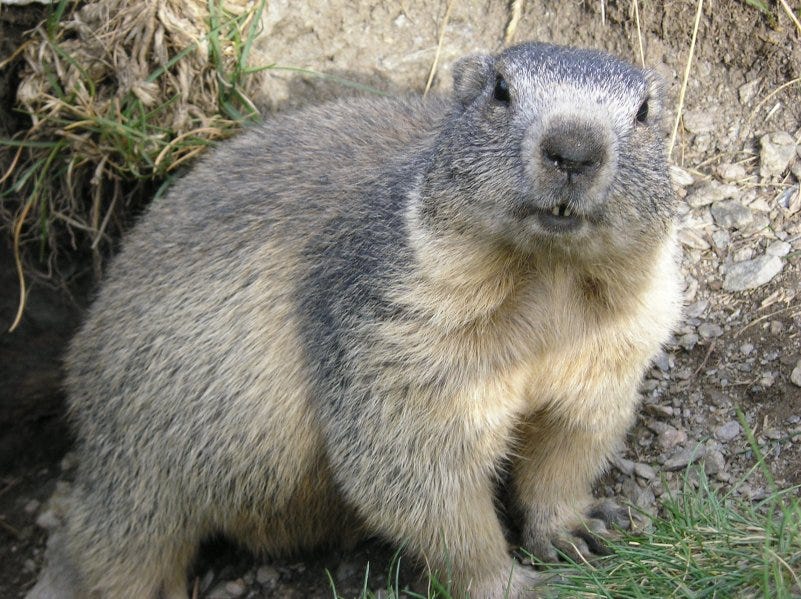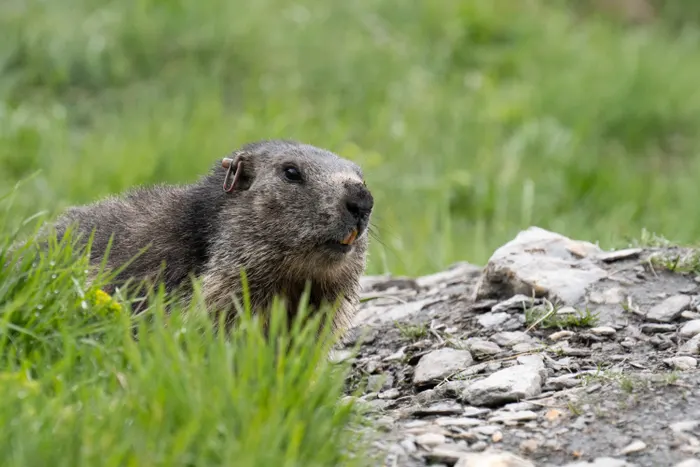About Marmots
About Marmots, often referred to as “ground squirrels,” are captivating creatures that inhabit various regions across the globe. In this comprehensive guide, we’ll embark on a journey to explore the fascinating world of marmots, uncovering their origins, unique adaptations, behavior, habitats, and significance in both natural ecosystems and human cultures.
Origins and Distribution
Marmots belong to the rodent family Sciuridae and are native to Eurasia and North America. These robust rodents are known for their burrowing behavior and are typically found in mountainous regions, grasslands, and alpine meadows. While there are several species of marmots, the most well-known include the yellow-bellied marmot (Marmota flaviventris) of North America and the alpine marmot (Marmota marmota) of Europe.
Physical Characteristics
Marmots are characterized by their stout bodies, short legs, and long, bushy tails. They have strong claws for digging burrows and large cheek pouches for storing food. Depending on the species, marmots vary in size, with some reaching lengths of up to 30 inches and weights of over 20 pounds. Their fur coloration ranges from shades of brown and gray to reddish-brown and black, providing camouflage against their rocky habitats.
Behavior and Social Structure
Marmots are highly social animals that live in colonies consisting of family groups. Marmots exhibit complex social behaviors within these colonies, including grooming, play, and vocal communication. Marmots are also known for their vigilance, with individuals standing guard to alert the colony of potential threats, such as predators or intruders.
About Marmot Habitat and Diet
Marmots inhabit various habitats, including alpine meadows, grasslands, and rocky slopes. They are herbivores, feeding primarily on grasses, herbs, roots, and leaves. Marmots are well-adapted to their mountainous environments, where they can forage for food while remaining vigilant for predators such as eagles, foxes, and coyotes.
Reproduction and Life Cycle
Marmots have a relatively short breeding season in late spring or early summer. After a gestation period of several weeks, female marmots give birth to litters of pups in underground burrows. The pups are born blind, hairless, and entirely dependent on their mothers for warmth and nourishment. Young marmots learn essential survival skills from their parents and other colony members as they grow.
Conservation Status and Human Interactions
While many species of marmots are currently listed as least concern by conservation organizations, some populations face habitat loss, fragmentation, and climate change threats. Human activities, such as agriculture, urbanization, and recreational development, can also impact marmot populations by reducing available habitat and increasing the risk of predation and competition.
Cultural Significance
Marmots are culturally significant in various human societies, often appearing in folklore, mythology, and traditional medicine. In some cultures, marmots symbolize wisdom, resilience, and community cooperation. Additionally, marmots play essential ecological roles as ecosystem engineers, shaping landscapes through their burrowing activity and providing food for predators.
Marmots are remarkable creatures that play vital roles in the ecosystems they inhabit and hold cultural significance in human societies worldwide. By understanding and appreciating their unique adaptations and behaviors, we can work to conserve and protect these charismatic rodents for future generations to enjoy.
Whether you encounter them in their alpine habitats or learn about them through cultural stories and traditions, marmots offer endless opportunities for fascination and appreciation. Let us continue to celebrate the wonders of marmots and the intricate web of life they contribute to.
Fascinating Facts About Marmots
1. Hibernation Masters: Marmots are among the few mammals that undergo true hibernation, lowering their body temperature and metabolic rate to survive harsh winter conditions.
2. Family Oriented. Marmots live in family groups called colonies, consisting of a dominant male, several females, and their offspring, fostering strong social bonds within their communities.
3. High-altitude Dwellers. Alpine marmots are known for their ability to thrive in high-altitude environments, with populations found at elevations exceeding 10,000 feet in the European Alps.
4. Vocal Communicators: Marmots use various vocalizations, including whistles, chirps, and alarm calls, to communicate with each other and warn of potential threats.
5. Keystone Species: Marmots play a crucial role as keystone species in their ecosystems, influencing vegetation dynamics, soil structure, and nutrient cycling through their burrowing and foraging activities.
6. Longevity Records: While the average lifespan of wild marmots is around 5-7 years, captive individuals have been known to live for over 15 years under optimal conditions.
7. Cultural Symbols: Marmots are significant in various societies, with some indigenous cultures considering them sacred animals associated with wisdom, community, and the natural world.
8. Environmental Indicators: Marmots are often used as indicators of ecosystem health due to their sensitivity to environmental changes, making them valuable subjects for scientific research and conservation efforts.


